If you have a pregnant Syrian hamster, it is important to provide her with the right care to ensure a healthy litter of babies.
In this comprehensive guide, we will discuss everything you need to know about caring for pregnant Syrian hamsters, from diet to exercise to birthing.
Keep reading for our best tips on ensuring a safe and healthy pregnancy for your furry friend!
Key Takeaway
- Caring for a pregnant Syrian hamster involves providing her with a high-quality, protein-rich diet, ensuring she has plenty of clean water, moving her to her own cage in a quiet area, and avoiding handling her or the babies for at least two weeks after birth.
- To ensure the safety and well-being of a pregnant hamster and her unborn pups, it’s necessary to separate her from other hamsters, particularly males, as they can pose a threat to her and her babies.
- To provide the necessary nutrition for a pregnant hamster, you should feed her a high-quality diet enriched with protein and good fats, including boiled eggs, lean cheeses, vegetables like broccoli and cucumber in small portions, and high-protein foods such as hard-boiled eggs, a handful of nuts, or chicken cooked without seasoning, given twice a week.
How To Care For a Pregnant Syrian Hamster
Caring for a pregnant Syrian hamster involves ensuring proper nutrition, maintaining a quiet and stress-free environment, and preparing for the arrival of the babies.
Nutrition for Pregnant Syrian Hamsters
A balanced and nutritious diet is essential for a pregnant Syrian hamster. It’s important to provide a variety of fresh fruits and vegetables, high-quality hamster pellets, and protein sources such as mealworms or boiled eggs.
As a vet, I’ve found that a well-fed mother is more likely to have a successful pregnancy and healthy pups.
Maintaining a Stress-Free Environment
A quiet and calm environment is vital for a pregnant hamster. Avoid unnecessary handling and disturbing her cage, as this could lead to stress and potential complications.
From my experience as a vet, I highly recommend placing the cage in a low-traffic area of your home to minimize disturbances.
Preparing for the Arrival of Babies
Syrian hamsters have a gestation period of about 16 days. During this time, ensure that the mother has plenty of bedding material to build a nest for her babies.
Once the babies arrive, it’s crucial not to disturb the nest or handle the babies for at least two weeks to avoid upsetting the mother, which could lead to neglect or cannibalization of the pups.
In my veterinary practice, I’ve seen how critical this period is for the survival and health of the newborn hamsters.
Monitoring Health and Well-being
Regularly observe your pregnant hamster from a distance to check for any signs of distress or illness. If you notice excessive weight loss, lack of movement, or any other concerning symptoms, consult a vet immediately.
As a vet, I can’t stress enough how important prompt medical attention is during a hamster’s pregnancy.
Separating the Babies
Once the babies are around 5 weeks old, they should be separated based on their gender to prevent unwanted pregnancies. During this period, continue to monitor their activity and eating habits closely.
From my years as a vet, I’ve observed that this is a crucial stage in a young hamster’s life, and proper care can ensure they grow into healthy adults.
How Do I Know If My Syrian Hamster Is Pregnant?
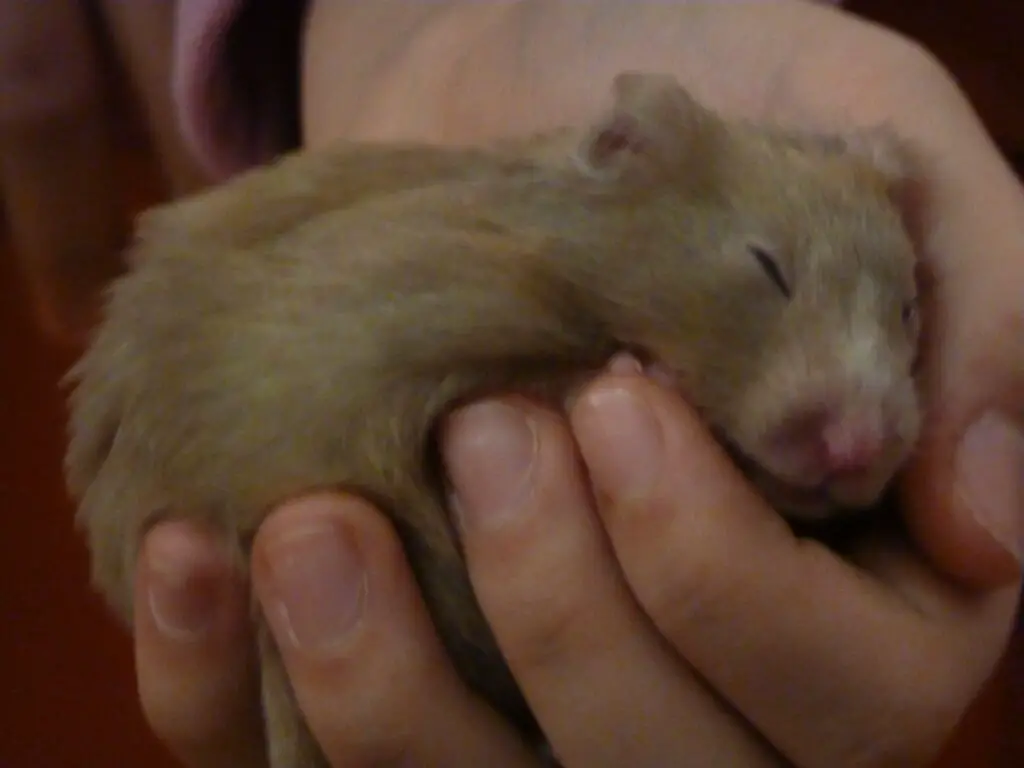
Syrian hamsters are usually pregnant for 16 to 18 days before they give birth. But how can you tell if your hamster is pregnant? Here are five telltale signs that your hamster may be expecting:
1. She’s getting bigger
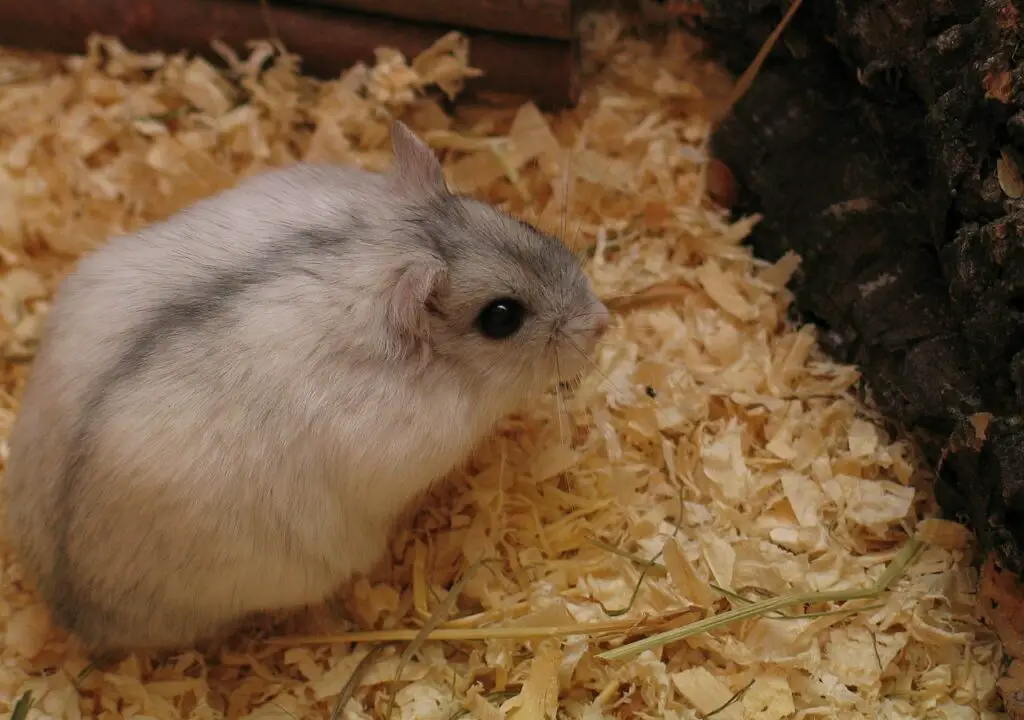
When a hamster is pregnant, she will usually start to put on weight. You may notice that her belly starts to swell and that she looks a bit rounder than usual. This is because she is carrying around a litter of baby hamsters, and her body is preparing for their arrival.
After mating, the female’s fertilized eggs will begin to travel down her fallopian tubes and into her uterus. There, they will implant in the lining of the uterus and begin to grow. Hamsters have a relatively short pregnancy period, and their litter usually consists of 4-6 baby hamsters or pups.
As the baby hamsters grow, the mother hamster will appear to be getting bigger. This is one of the most common signs that a hamster is pregnant says WikiHow.
2. Her nipples are enlarging

If you notice that your hamster’s nipples are enlarged or that she is producing milk, these could be signs that she is pregnant.
Pregnant hamsters have enlarged nipples because they need more milk to feed their offspring. Hamsters are born blind and deaf, so they rely on their mother’s milk for nutrition. The mother’s milk is also important for their immune system.
The increased demand for milk during pregnancy causes the hamsters’ nipples to enlarge. This allows the mother to produce more milk and provides her babies with the nourishment they need to grow and thrive.
Additionally, the enlarged nipples may also help the mother bond with her offspring. By nursing them, she can create a strong emotional connection that will help them survive in the wild.
3. She’s nesting
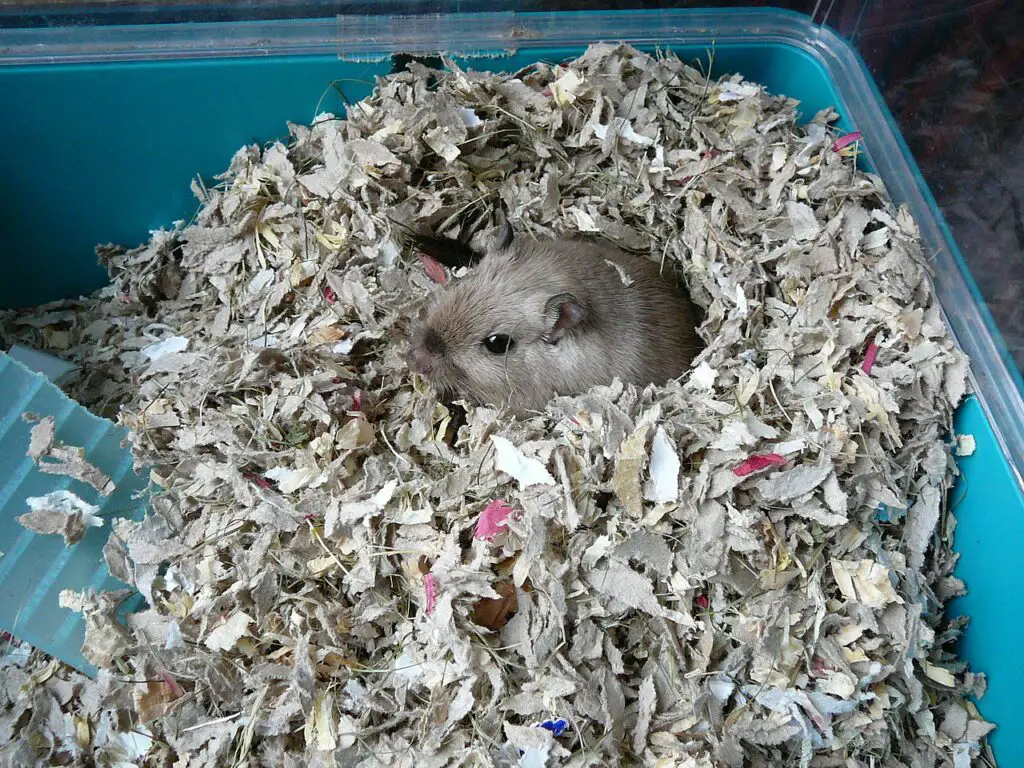
Nesting is a common behavior among expectant mothers, but why do hamsters do it? One theory is that nesting helps to keep the mother and her offspring safe from predators. By building a nest, the mother can create a secure space where she can hide her young and rest without having to worry about being attacked. Another possibility is that nesting helps to regulate body temperature.
By creating a warm, sheltered space, the mother can help to keep her babies warm and reduce the risk of hypothermia. Additionally, nesting may help to conserve energy. By huddling together in a nest, the mother and her young can stay warm without expending too much energy.
4. Eating more than usual

Pregnant hamsters gain weight for the same reason that human mothers-to-be do: they are eating for two (or more)! A pregnant hamster will typically consume about twice as much food as she did before she became pregnant. This extra food helps to support the growth of her litter and provides essential nutrients for the babies.
After giving birth, the mother hamster will continue to feed her young until they are old enough to eat on their own. At that point, she will gradually return to her normal diet. While pregnancy is a time of significant weight gain for hamsters, they are generally able to return to their pre-pregnancy weight within a few weeks says The Spruce Pets.
5. Behaving highly aggressive
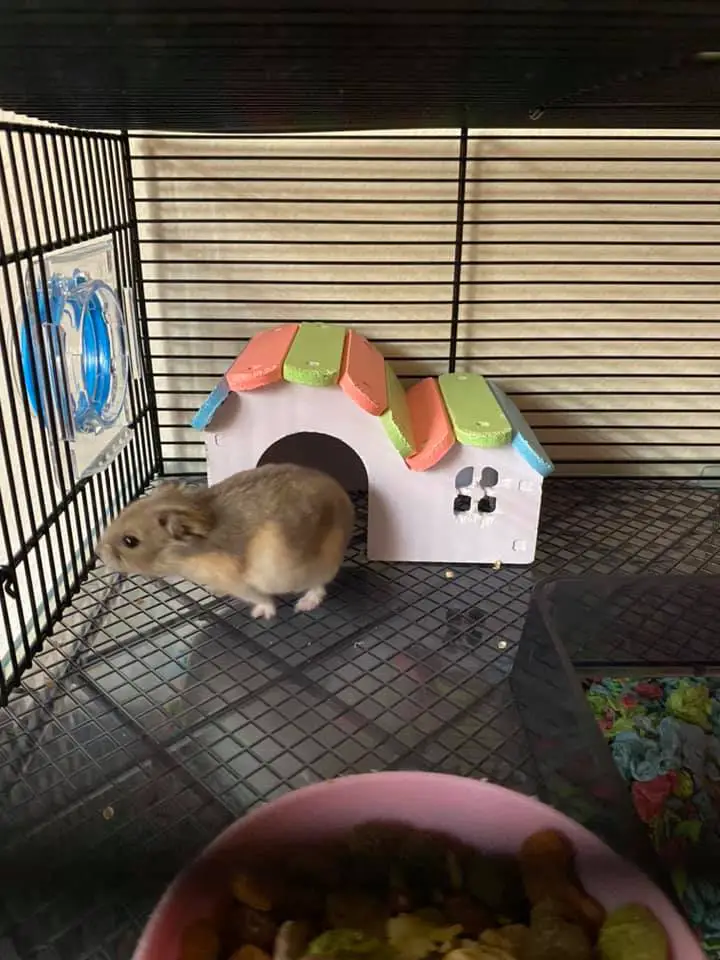
Pregnant hamsters are highly guarded and aggressive. Their nest is their refuge, and they will protect it fiercely. If you try to approach a pregnant hamster’s nest, she may lunge at you or even bite. This is because she is instinctively trying to protect her young.
The best way to handle a pregnant hamster is to give her space and let her be. Once she has given birth, she will gradually become more accepting of human presence again. Until then, it is best to give her the privacy and peace she needs.
Should I Separate The Pregnant Hamster?
Separating a pregnant hamster from her cage mates is a crucial step to ensuring her safety and the well-being of her soon-to-be-born pups.
When a hamster is pregnant, it’s important to give her a peaceful, stress-free environment where she can comfortably carry and deliver her pups.
Other hamsters in the cage, especially males, can pose a threat to the pregnant female and her pups. Males may impregnate the female again immediately after birth, which could be harmful to her health. Moreover, other hamsters may also disturb the nest or in worst cases, harm the babies.
From my practice as a vet, I’ve seen that setting up a separate, comfortable space for the pregnant hamster works best.
A quiet, warm corner with plenty of bedding for her to create a nest is ideal. Make sure to move her gently and avoid any unnecessary handling afterward.
She’ll need a balanced diet, rich in proteins to sustain her through pregnancy and the nursing period. Fresh water should always be available says Animal Wised.
How Long Is a Syrian Hamster Pregnant For?
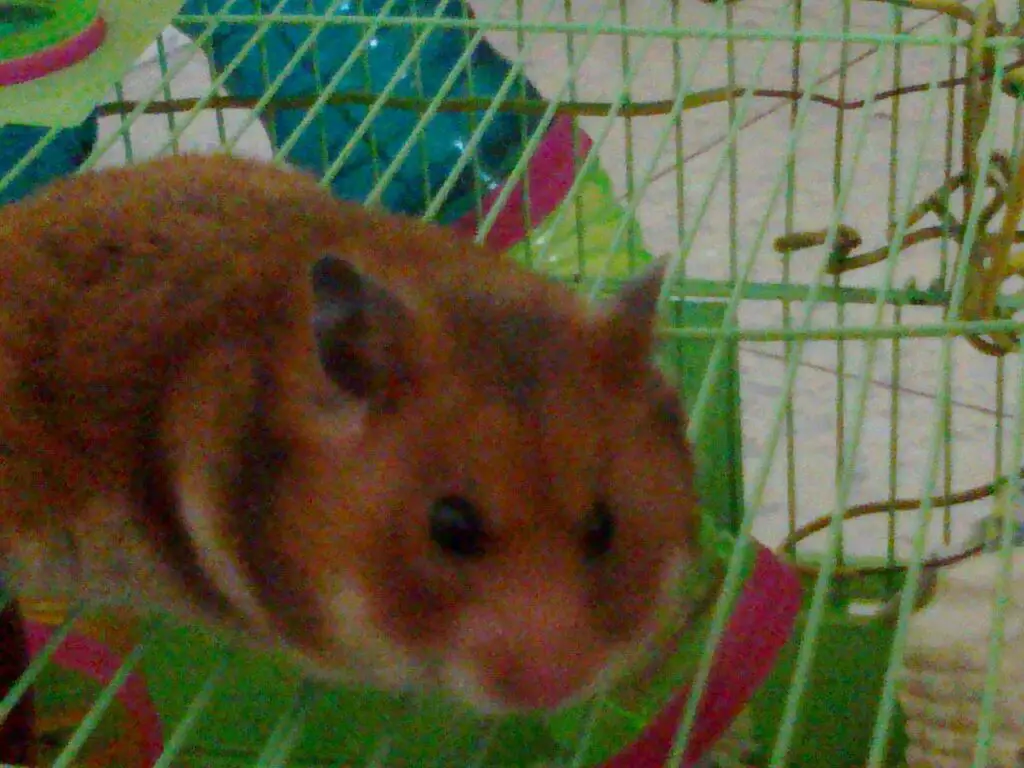
Syrian hamsters are relatively small animals, and as such, their pregnancies tend to be relatively short. The average pregnancy lasts between 16 and 18 days, though it can be as short as 12 days or as long as 24 days.
The first stage of pregnancy is called implantation, during which the fertilized egg attaches to the lining of the uterus. This process usually takes place within a week of fertilization and is followed by a period of cell division known as embryogenesis.
During this time, the embryo grows and develops into a fetus. By the end of embryogenesis, the fetus is fully formed and ready to be born. The final stage of pregnancy is called gestation, during which the fetus matures and prepares for birth.
Litters typically consist of four to six pups, though larger litters are not unheard of. Syrian hamsters are also known to be very good mothers, and they will typically take care of their young for 4-5 weeks before they are ready to fend for themselves.
After that, the pups will typically be able to mate and produce their own litters within a few months. Consequently, Syrian hamsters have a relatively short breeding cycle, which can result in large populations if left unchecked. As a result, Syrian hamsters have often been considered pests in some areas.
Hamsters are born relatively undeveloped, compared to other mammals. Most of their development occurs after they are born. For the first few days after birth, hamster pups are hairless and their eyes are closed.
Their skin is pink and translucent, making them look somewhat like mice. Gradually, they begin to grow fur, and their eyes open. Around two weeks after birth, they are fully furred and their eyes are fully developed.
What Should I Feed My Pregnant Hamster?
A healthy diet is important for all animals, but it is especially critical for pregnant hamsters. These small rodents need a diet that is high in protein and fat to support the growth of their offspring. Here is a list of foods that you should feed your pregnant hamster:
1. Sunflower seeds
Sunflower seeds are a healthy snack for pregnant hamsters. They are high in protein and essential fatty acids, which are necessary for the development of the fetus. Sunflower seeds also contain vitamins A, C, and E, which are important for the health of the mother and the developing baby.
In addition, sunflower seeds are a good source of folic acid, which is essential for the prevention of birth defects. Pregnant hamsters should eat a handful of sunflower seeds per day, either as a snack or mixed into their regular food.
2. Hard-boiled eggs
As any pet owner knows, diet is an important part of keeping your furry friend healthy. Pregnant hamsters have special nutritional needs, and one food that can be beneficial for them is hard-boiled eggs. Eggs are a good source of protein and fat, both of which are important for pregnant hamsters.
The protein helps to support the growing baby hamsters, and the fat provides energy for the mother. In addition, eggs contain choline, which is essential for brain development. Hard-boiled eggs are easy to digest, making them a perfect snack for pregnant hamsters. Just be sure to remove the shells before giving them to your pet!
3. Lean meats
Lean meats such as chicken and turkey are a great way to ensure that your pregnant hamster gets the nutrients she needs without adding extra fat. In addition, lean meats are easy to digest and are unlikely to cause stomach upset. If you’re unsure about what to feed your pregnant hamster, talk to your veterinarian for guidance. With a little care and attention, you can help your pet have a healthy and happy pregnancy.
4. Fresh fruits
Pregnant hamsters should eat fresh fruits to get the nutrients they need. Fruits are rich in vitamins, minerals, and fiber. They also have a high water content, which is important for pregnant hamsters because they need to drink lots of water to stay hydrated.
Fresh fruits are the best choice for pregnant hamsters because they’re more nutritious than processed fruits. Processed fruits have been stripped of many of their nutrients during processing. Pregnant hamsters need all the nutrients they can get, so fresh fruits are the best choice.
5. Vegetables
When it comes to pregnancy, there are many things to consider. Diet is one of the most important factors, as certain nutrients are essential for a developing fetus. This is especially true for pregnant hamsters, who have specific dietary needs.
While vegetables are an important part of a healthy diet for all hamsters, pregnant hamsters should be given a few extra helpings of leafy greens and other nutrient-rich vegetables. In addition to providing essential vitamins and minerals, vegetables can also help to regulate blood sugar levels and prevent obesity. As a result, they are an important part of any pregnancy diet, including the diet of a pregnant hamster.
6. Pregnant mother pellets
Pregnant hamsters need a nutritious diet to support their growing babies. While there are many commercially available pellet foods that are formulated for pregnant and nursing mothers, you can also make your own pellets at home. These homemade pellets are made with a variety of nutrient-rich ingredients that will support the health of both the mother and her babies.
To make your own pregnant mother pellets, simply combine equal parts of rolled oats, ground flaxseed, and dried fruit. You can then add a small amount of water to help bind the ingredients together. The pellets can be fed to your pregnant hamster as needed and will provide her with the nutrients she needs to ensure a healthy pregnancy.
What Should I Do When My Hamster Gives Birth?

When your hamster gives birth, it is important to give her a nest where she can care for her young. You can either purchase a nest from a pet store or make one yourself out of soft materials like cloth or paper.
The nest should be placed in the cage in a quiet, secluded area. Once the babies are born, do not handle them too much as this can stress out the mother and cause her to abandon her litter. Instead, let her take care of them herself and only handle them when absolutely necessary.
It is very important to know the fact that Syrian hamsters can be quite territorial, and they do not always get along with their babies. In fact, it is not uncommon for adult Syrian hamsters to kill and eat their young. There are several possible reasons for this behavior, including the fact that baby hamsters are a source of protein and that adult hamsters may view them as competitors for food.
This is why it is important to monitor the litter for the first day or two and just observe how the mother hamster reacts when around the pups. If you notice any strange behavior from the mother or the father, you should separate the young and care for them.
How Do You Clean a Hamster’s Cage After Giving Birth?
Cleaning a hamster’s cage after it has given birth is an important task that should not be taken lightly. Cleaning the hamster’s cage after giving birth should be done at least five days after the pups are born. Here is how to clean a hamster’s cage after giving birth:
1. Place the mother hamster and pups in a different cage
Cleaning the cage after your hamster gave birth will include removing the bedding, scrubbing, and disinfecting. This is why it is important to slowly and carefully transfer the mother hamster and her pups into a different cage or a makeshift cage (box). Be careful when transferring the mom because she will be overprotective of her young.
2. Remove the bedding material
Giving birth is an exciting, but messy, time for any mother. The first step is to remove all of the bedding material from the cage. This includes any nesting material, as well as any soiled bedding. This will help to keep the area clean and free of bacteria. You should also remove any uneaten food or water from the cage and replace it with fresh food and water once the cage has been cleaned.
3. Disinfect the cage
Once your hamster has given birth, it is important to clean the cage to prevent the spread of infection. Then, using a mild disinfectant, clean all surfaces of the cage. Be sure to rinse the cage thoroughly afterward to remove any residual chemicals. Finally, allow the cage to dry completely before adding fresh bedding and reintroducing your hamster.
4. Add new bedding material
Hamsters require a soft, comfortable bedding material in which to make their nest. There are a variety of bedding materials on the market designed specifically for hamsters, but not all of them are created equal.
Some common bedding materials, such as straw or pine shavings, can actually be harmful to hamsters if ingested. The best bedding material for hamsters is a soft, absorbent material that is safe for them to eat if they happen to nibble on it.
One type of bedding that meets these criteria is aspen shavings. Aspen shavings are soft and absorbent, and they’re also safe for hamsters to eat if they happen to nibble on them. Another type of bedding that is suitable for hamsters is recycled paper pellets. Recycled paper pellets are also soft and absorbent, and they’re made from a material that is safe for hamsters to eat if they happen to nibble on it.
5. Bring the mother and litter back into the cleaned cage
Once the cage has been cleaned, disinfected, dried, and fresh bedding has been added, place the mother hamster and her litter back into the cage. Leave the mom and her pups alone for a couple of days so they can get used to the cage.
Can I Hold My Hamster While Pregnant?
Handling a pregnant hamster should be minimized as much as possible to prevent causing stress or harm to the mother and her unborn pups.
While it’s understandable that you might want to hold your hamster during pregnancy, it’s advisable to limit this to necessary instances only, such as cleaning the cage or checking the hamster’s health.
Pregnant hamsters can be more nervous or irritable, and handling them could cause undue stress, which is not good for the mother or her babies.
From my personal experiences as a vet, I’ve observed that hamsters are very capable mothers and usually do not require much intervention. They instinctively know how to care for their young and prefer to do so in privacy.
Any unnecessary disturbance, including handling, can potentially lead to problems such as premature birth or even cannibalism of the babies.
It’s also important to remember that when you do need to handle your hamster, always wash your hands before and after to prevent the spread of any germs. Once the babies are born, avoid touching them or the nest for at least two weeks.
This is a crucial period where the mother bonds with her babies, and any scent of humans can disturb this process.
FAQs
Q: Can a hamster give birth without any assistance?
A: Yes, hamsters are capable of giving birth without any assistance. They are instinctively capable of taking care of the birthing process.
Q: What should I do if my hamster gives birth?
A: If your hamster gives birth, make sure to provide a warm and secure environment, avoid disturbing the mother and her pups, and ensure they have access to food and water.
Q: What type of bedding should I use for the pregnant hamster?
A: It is recommended to use safe and comfortable bedding materials such as shredded paper or aspen bedding for a pregnant hamster.
Q: Can I touch the baby hamsters?
A: It is best to avoid touching the baby hamsters during the first week of their birth as the mother may become stressed and may harm or abandon the pups.
Q: What should I feed a pregnant hamster?
A: A pregnant hamster should be provided with a well-balanced diet including fresh fruits, vegetables, high-quality hamster pellets, and occasional protein-rich treats.
Q: How many babies can a pregnant hamster have?
A: A pregnant hamster can have a litter ranging from 4 to 12 pups, depending on the breed and individual characteristics.
Conclusion and final thoughts
In conclusion, caring for a pregnant Syrian hamster requires patience, attention to detail, and proper knowledge about their needs.
It is important to provide them with a safe and comfortable environment, nutritious food, and regular check-ups with a veterinarian.
By following these guidelines and providing them with the necessary care, we can ensure that our pregnant Syrian hamsters have a healthy and stress-free pregnancy.




